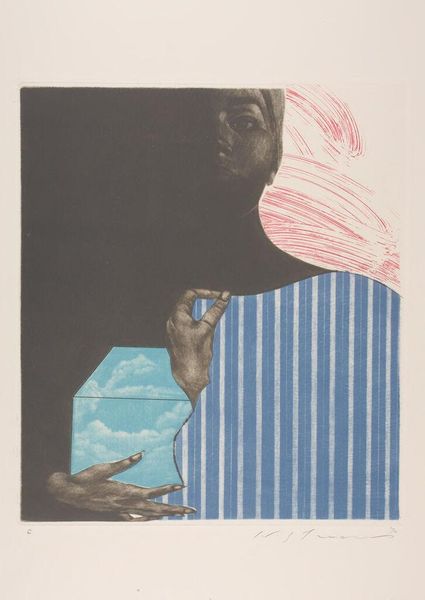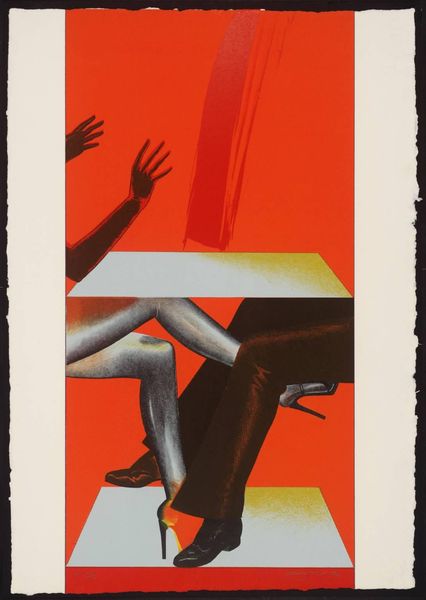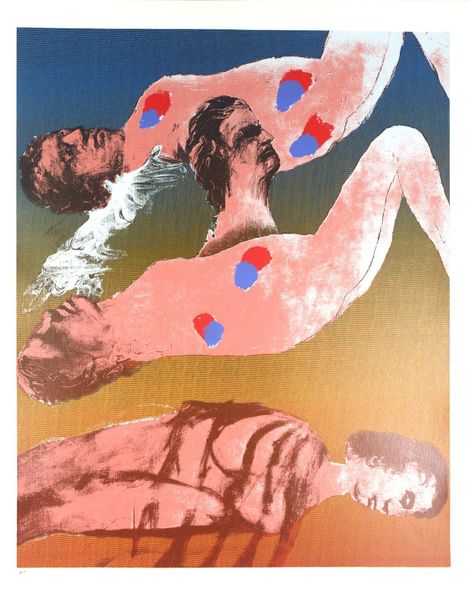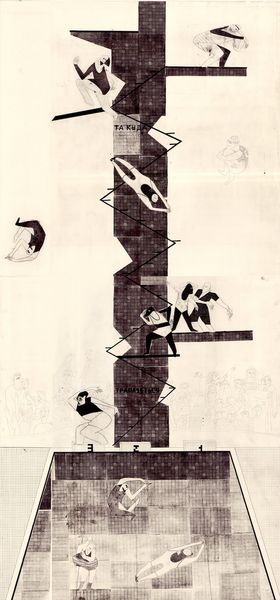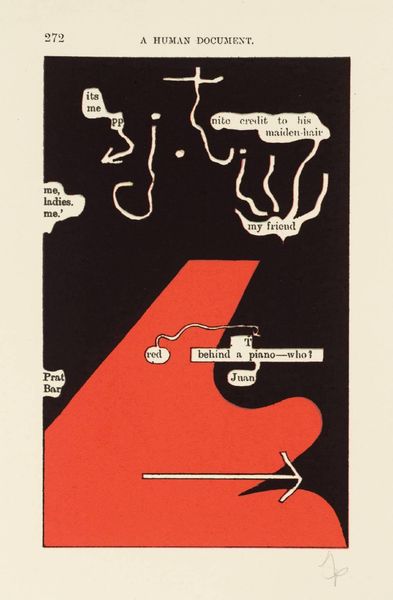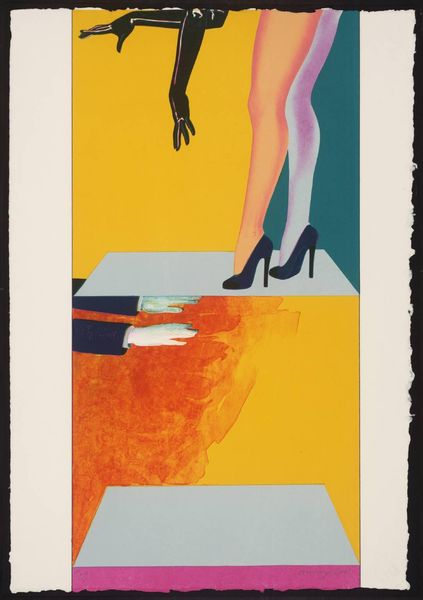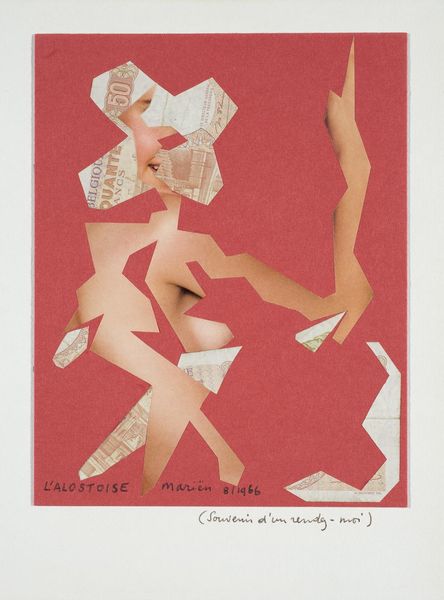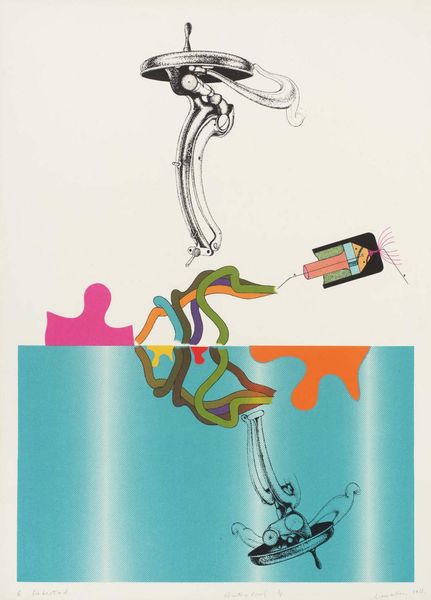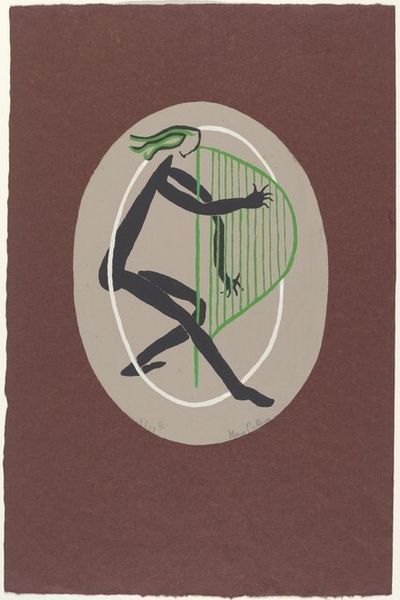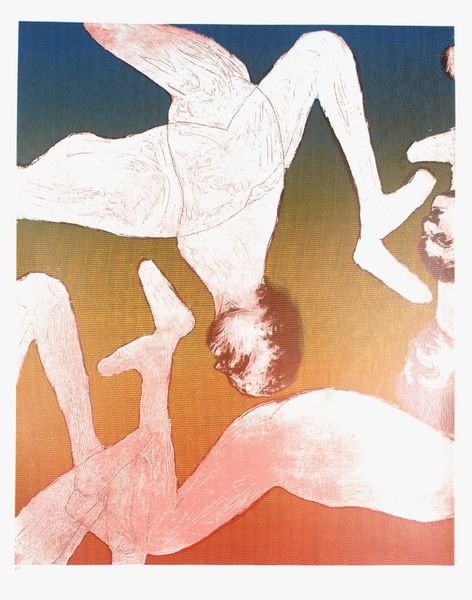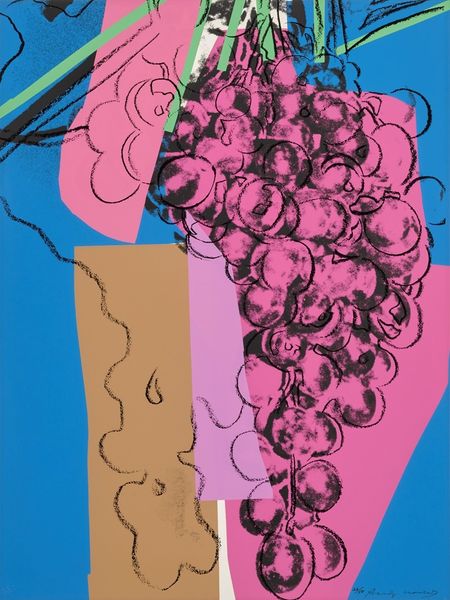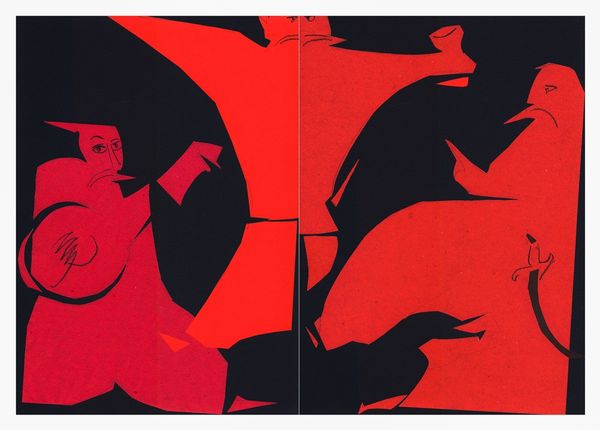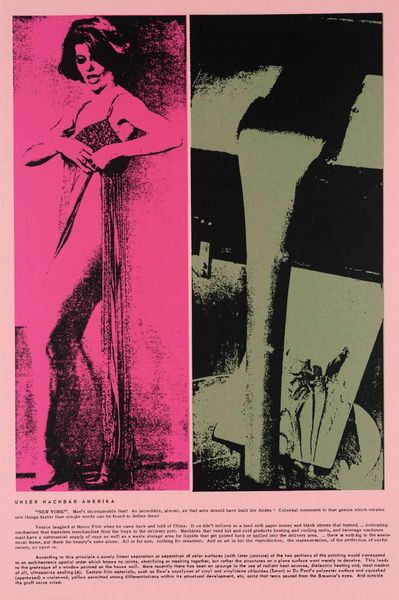
Dimensions: height 570 mm, width 767 mm
Copyright: Rijks Museum: Open Domain
Curator: Looking at "Vrouw en ladder" by Aat Verhoog, dating from around 1965 to 1980, a certain unease settles in me. The colours are vivid but unsettling, while the line work seems chaotic. What do you see, Editor? Editor: The clash of tones gives it a bold, almost jarring effect, yet my immediate thoughts drift towards the process of printmaking. I wonder about the etchant and paper used, and the social currents shaping Verhoog’s engagement with print. How was this disseminated? Curator: Let us delve into the formal properties, then. The stark opposition of figuration with abstraction calls for investigation. Observe the flat red field beneath the nude, its sinuous lines contrasting starkly with the solid green ladder. What purpose does that ladder fulfill in the composition, I wonder? Is it symbolic of social mobility? A purely aesthetic device? Editor: I imagine the conditions under which Verhoog worked. Was there access to specialist printmaking facilities? The interplay of colours here reminds me of advertising aesthetics, even poster art—consider its accessibility to a broader audience compared to painting. The figure and her placement seem directly connected to the viewer’s gaze; how might she navigate upwards using this support, who made it and what's her reward? Curator: Her reach for that impossibly green ladder! The figure's expression suggests some form of angst. Her eyes, elongated into horizontal lines, evoke movement yet express desperation; while her hair also moves, she herself remains rather stilted. How do we resolve that dichotomy of aspiration against the static quality within the figure's form? Is this not suggestive of some inherent existential friction? Editor: Precisely! Her nudity further underscores a certain vulnerability. It provokes queries about gender and labour, how they interplay across medium-specific practices. Think too about the materials at hand; etchants themselves require knowledge of toxic properties! A skilled artist is indeed knowledgeable about the alchemical changes and practical considerations governing such a process! Curator: Indeed, the use of colour here—especially that hyper-real green—invites inquiries into notions of artificiality within modern society. A statement perhaps regarding humankind's constant struggle with a fabricated reality? This piece remains, for me, a site for philosophical excavation—a dialogue of form and meaning to ponder repeatedly. Editor: Indeed! Considering its materiality reveals not merely formal intent but the human labor involved, and societal currents—transforming it, paradoxically, into an eloquent artifact. A fascinating snapshot into a specific period's cultural ethos and access.
Comments
No comments
Be the first to comment and join the conversation on the ultimate creative platform.
